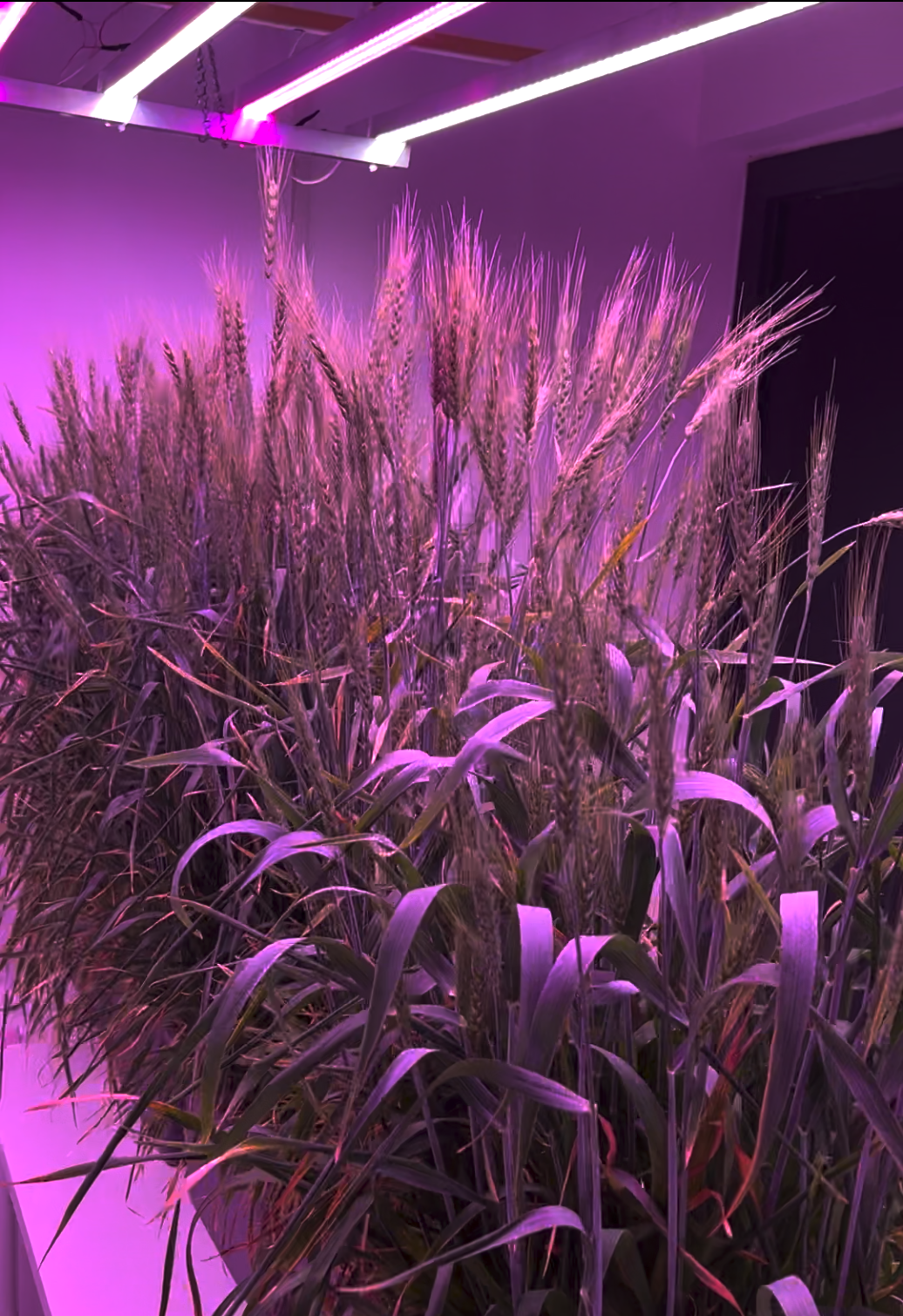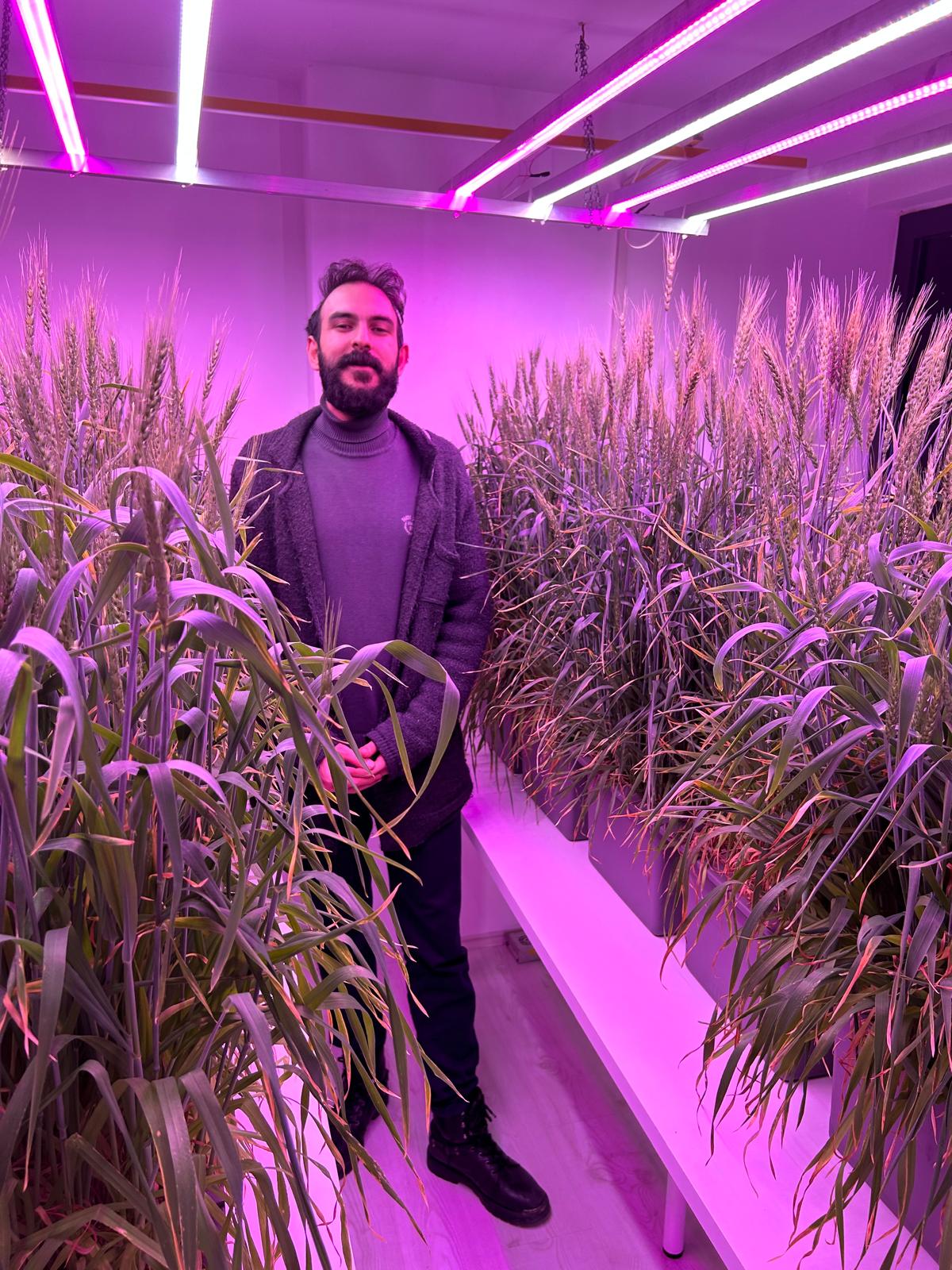Hydroponic Wheat
he fully closed-system agriculture technology I have developed enables multiple production cycles throughout the year, offering a sustainable, high-yield,
Hydroponic Wheat
he fully closed-system agriculture technology I have developed enables multiple production cycles throughout the year, offering a sustainable, high-yield,
Innovative Closed-System Agricultural Technology and the Strategic Importance of Wheat
1. Developed Closed-System Agricultural Technology
The fully closed-system agriculture technology I have developed enables multiple production cycles throughout the year, offering a sustainable, high-yield, and climate-independent production model. This system allows for up to five harvests per year thanks to its controlled climate and automation infrastructure.
Its multi-tiered structure increases the amount of product obtained per unit area in direct proportion to the number of tiers. To illustrate with a numerical example, a single-tier system yielding 300 kg of product can yield 1,500 kg from the same area when a five-tier structure is used. When five production cycles are carried out per year, the total annual yield reaches 7,500 kg. This structure combines the most efficient components of vertical farming technologies with the closed-system production model.
Another key advantage of the system is that it uses 80% less water. At the end of the production process, the water remaining in the system is recycled and can be reused for seed germination in the next planting season. This feature contributes to environmental sustainability by supporting the efficient use of water resources.
The nutrient solution formulations required for growing the products have been specially developed by me. These formulations enable higher yields with less fertilizer use compared to open field agriculture. Furthermore, thanks to the algorithm I developed, the chemical properties of the water used for irrigation are analyzed, and the composition of the nutrient solution is dynamically adjusted based on this data. Thus, the system creates variable fertilization formulas according to the water's content, providing both flexibility and cost advantages in commercial production.
The developed system can be adapted not only to fully enclosed environments but also to different conditions such as greenhouses, open fields, or semi-enclosed production facilities. This enables the development of production models suitable for various climatic and geographical conditions, creating a wide range of applications.
This technological infrastructure not only increases production efficiency but also saves water and energy, pioneering the sustainable and resilient agricultural systems of the future.
2. The Strategic Importance of Wheat and Its Impact on Global Food Security
A country's full independence is directly linked to its ability to meet the food and energy needs of its population with its own resources. The resources that meet these two basic needs are considered to be of high strategic importance. In this context, cereal products, especially wheat, fall into the strategic product category.
Wheat is not only the main food source for large-scale nutrition in societies, but also the basic raw material for feed production in the livestock sector. Furthermore, it holds an indispensable position as one of the first agricultural products of choice for biofuel production in the global search for alternative energy sources.
Due to its strategic importance, countries with strong economies aim to ensure food security and gain strategic superiority in the international arena by increasing their wheat stocks. Historical and current examples show that a country's war capability is closely related not only to its military power and weapons capacity but also to the adequacy of its wheat stocks. Indeed, countries closely monitor each other's defense spending as well as wheat production volumes and stock levels.
Nearly all of the wheat produced globally is consumed, with approximately 30% of total production stored. Only 15% of the wheat produced is traded internationally. This situation shows that countries first ensure their own domestic consumption and stock security, then export the surplus.
Following the COVID-19 pandemic, the strategic value of food has become much more apparent, and countries have strengthened their stockpiling policies to ensure food supply security. Additionally, concerns that the negative effects of global warming and climate change on agricultural production will continue to increase have led governments to adopt more protectionist agricultural planning.
These two developments—post-pandemic supply shortages and climate-related production risks—have led to sharp increases in global wheat prices, which in turn have contributed to rising inflationary pressures and deepening economic instability worldwide.




